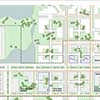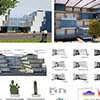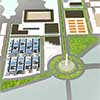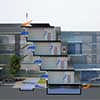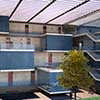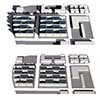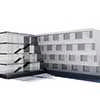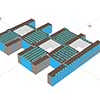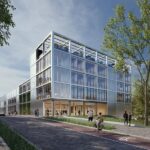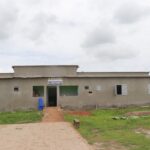Architecture at Zero, Student Residence Competition, News, Higher Education Design Facility
Architecture at Zero Competition : Design Contest Winner
Student Residence Design Contest : University of California Building
26 Jun 2017
Architecture at Zero 2017 Competition
9 Jan 2013
Architecture at Zero Design Competition
Design for Student Residences
Team led by Ren Ito architect
Winning proposal of “Architecture at Zero” competition
“Architecture at Zero” competition was held by AIA San Francisco to design a residential building/administration building of new campus of the University of California. It was a remarkable competition not only because of the goal to create a self sustainable university campus but also the competition requirement of several scientific proofs.
Team members: 1 Japanese, 8 Portuguese and 1 Cape Verdean.
Ren Ito, Guida Gonçalves, João Ramos, Denise Edwiges Soares, Ana Silva, Hugo Teixeira, Filipe Quinta, Cláudia Sousa, Maria Ferrão, Miguel Augusto
This student residence project is designed to show the various activities of the university students to people walking along the nearby streets as an entrance of the campus. The building is oriented in an east-west direction, with alternate open and closed courtyards.
The open courtyards may be used for relaxing in the sun, outdoor parties, and socializing, while the closed courtyards may be used for more private meetings. Each courtyard has its own configuration and plants. Attached to both types of courtyard are common-use games rooms for ping-pong, pool, or television. Meeting-rooms are also close to both the closed and open courtyards. Visitors will be able to see all these activities from the nearby streets.
The distances between the residences are set to ensure a minimum of three hours of sunlight to all the bedrooms even during the shortest days of winter. During the summer, direct solar radiation is controlled by various shading devices, described in detail below.
The roofs of the residences are reserved for solar (photo-voltaic) panels. These panels generate 63 percent of the total energy to be used /total energy demand/ in the proposed area. Wind turbines installed in the middle of the street supply an additional energy demand.
Irrigation water from the Merced Irrigation District Canals, channeled through the basements of the residences, will be used for evaporative cooling during the summer.
This project is inspired by several unique characteristics of the cactus family.
Cacti have the unique ability to open their stoma –photosynthesis points — at night. We exploit this property to enable night ventilation and evaporative cooling of the closed courtyards.
Cacti also have louver-like surfaces and spines, which prevent overheating in conditions of constant sun-exposure. This property inspires the zig-zag shape of the residences, vacuum heat water tube and the savonius wind turbines on the east and west sides of the courtyards, louvers on the roof of closed courtyards and the L-shaped shading device on the windows.
Cacti have two types of roots — taproots to collect water from deep underground, and another root system near the ground surface to collect rainwater. Similarly, we propose two water sources, one from recycled irrigation water, and another from rainwater — a cactus-inspired water circulation system.
Finally, taking the aeroloes of the cactus as a model, we propose game rooms, meeting rooms, computer labs, restrooms, study rooms, RA rooms, and social lounges arrayed around the main residential building.
The project design offers the following benefits to residents:
— Each bedroom faces one closed air-conditioned courtyard and one open-air courtyard.
— Residents can open their windows onto the closed courtyards the whole year for fresh air and ventilation. They can also open the windows towards open courtyards at night during summer, mild spring/fall and on humid summer days.
— Air condition is carried out in the closed courtyards using the following process:
1. Exterior air passes through a basement filled with irrigation and rain water to moderate the temperature and add humidity.
2. Then the air enters into the closed courtyard and is distributed to each bedroom.
3. The air in each bedroom is exhausted through the bathroom.
4. The air exhausted from the bathrooms passes a tube at the southern wall and is pushed up by solar chimney effect.
5. Finally it is exhausted to the outside through a wind powered roof exhaust ventilation fan.
–Solar shading is controlled as follows:
1. Each upper floor has an overhang of 5 feet to provide shadow for the next lower story during summer. This dimension is determined based on the solar altitude at midday on 21 of March.
2. On the western facade, a vertical shading panel is installed.
3. On the west side of the courtyard, a vacuum-tube-solar-collector and a savonius windmill are installed to offer shading.
–The PV panel on the roof has two types. For the roof above the bed rooms, monocrystalline silicon wafer is utilized. For the roof above the closed courtyard, a thin solar cell film is deployed.
–The closed courtyard has vegetation appropriate for temperate climates and the open courtyard is vegetated according to the dry environment. Vegetation and arrangements vary between all courtyards in order to create diversity.
–The elevation of the ground floor is 3 feet above street level to ensure residents privacy in their bedrooms. Access for disabled as well as bicycle parking is guaranteed by slopes and elevators.
–Each window has a reflection panel to illuminate the inside of the room with daylight. Recreational and common spaces (casual games rooms for pool, Ping-Pong or TV, meeting rooms, etc) and corridors feature glass block roofs to illuminate the interior with daylight.
Location: University of California, USA
Architecture Competitions
Architectural Competitions – Selection
Arquine Competition No.23 Pavilion
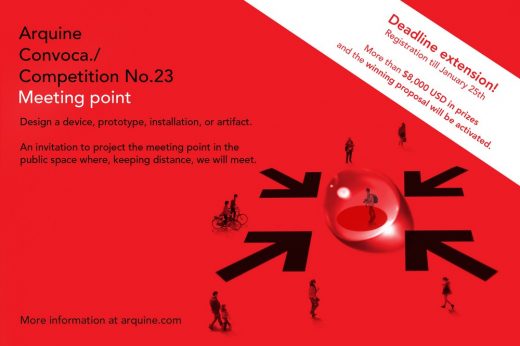
Arquine Competition No.23 Pavilion
PFFF Inflatable Architecture Competition
PFFF Inflatable Architecture Competition
Leipzig Architecture Contest, Germany
Leipzig Architecture Competition : Monument to Freedom and Unity
Flinders St Station Architecture Competition, Melbourne, Australia
Melbourne Design Competition
eVolo 2012 Skyscraper Competition
Architects, students, engineers + designers invited to participate in this architecture competition
eVolo Skyscraper Competition – winners
Building Competitions : Archive
Comments / photos for the Architecture at Zero Student Residence Competition Winner page welcome
Website: http://architectureatzero.com

